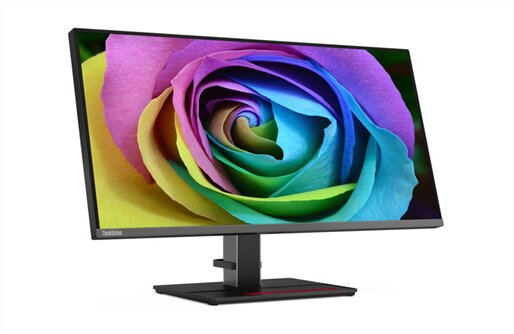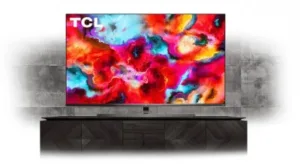MiniLED display technology can open up new opportunities for display application markets by offering higher specs and differentiated products. The global pandemic and slower economy have compounded the impact of slower display market demand. LCD has been facing over-investment, lower demand and low profitability. It has already pushed top suppliers such as Samsung Display and LG Display to move away from LCD production.

However, miniLED backlight technology (MiniLED-Based Displays Poised for Expanded Presence) can empower LCDs with very high contrast ratio, ultra high brightness, better HDR, thinner form factors and lower power consumption to compete directly with OLED in the high-end display application market.
MiniLED: For High-end TV
TV market demand has slowed down in recent years even though there has been a major shift towards larger screen sizes (55-inch and higher) and higher resolution (4K, 8K) displays. LCD TV (a-Si) has dominant share of the market but OLED TV has been gaining strong market shares in the high-end with thinner form factor, higher contrast, wider viewing angle, deeper black level, better color gamut and faster response time. Still it faces burn-in, lifetime, image retention and limited supply issues.
LG Display is the only supplier for OLED TV panels. Samsung Display is planning to manufacture emissive QDOLED in future years. Samsung Electronics has been gaining market shares in the high-end with higher specs (8K) and more competitive priced Quantum Dot(QD)-based (LCD) TV. MiniLED with full array blinking backlight can improve LCD performance significantly. Performance can even improve further with QD technology. Suppliers are hoping that possible market recovery in 2021 and Olympic Games will require higher-specs products to revive the market.
TCL was first to introduce miniLED backlight-based Quantum Dot TVs in sizes of 65”(<$2000) and 75”(<$3000) in 2019. At CES 2020, the following products were shown.
- TCL: 75-inch 8K TV with 25,000 miniLED, >10,000 dimming zones on a glass black plane.
- LG: 8K miniLED-based LCD TV concept capable of reaching 4000 nits brightness.
- Konka: 8K miniLED-based TV with 40K miniLEDs and 10K zones.
- Vizio: 8K miniLED-based TV concept.
- BOE: 8K TV miniLED-based panel with a glass backplane, planning to launch in 2020.
According to Taiwan-based news sources, Samsung is reported to be preparing launch of miniLED TV in 2021. Multiple TV brands are also expected to introduce miniLED-based TV products by next year. MiniLED component suppliers are starting to report strong demand for miniLED packages for TV in 2H 2020. The global pandemic situation may delay some product launches to 2021.
With a high number of miniLED and dimming zones, each zone can be turned on and off selectively empowering LCD TV with high contrast ratio, better HDR performance, higher luminance, deeper black level, better power consumption, thinner backlights and longer lifetime. There are new requirements for Energy Star 8.0, which measures energy consumption in a dynamic display content mode, which can help to highlight the energy efficiency of miniLED backlights.
MiniLED-based TV used less efficient passive matrix driving technology in 2019. With an increased number of zones, companies are shifting to active matrix driving technology in 2020, which is more efficient and cost effective. Panel suppliers such as AUO, Innolux, BOE and CSOT are all developing active matrix-based products, which will help adoption rates.
Smaller size chips, better die bonding and more efficient production, combined with lower open cell LCD TV panel are enabling lower cost TV. Currently the TCL 75-inch 4K miniLED-based TV price is lower than similar OLED products. Many brands will pursue multiple TV technology strategies with LCD, OLED, QD and miniLED-based LCD TV together. With the right price/performance strategy MiniLED can have great opportunities in the TV market in the next few years.
 TCL’s 75-inch 8 series Quantum Contrast MiniLED-backlit TV
TCL’s 75-inch 8 series Quantum Contrast MiniLED-backlit TV
MiniLED: For Gaming Monitors, Notebooks and High-end Tablets
At CES 2020, a series of gaming monitor based on Quantum Dot technology were introduced with miniLED backlights and a higher number of Full Array Local Dimming (FALD) zones. That enabled products with very high contrast, deeper black level, higher color accuracy, high efficiency, higher peak brightness, and greatly improved picture quality.
- Acer and Asus: Both had a QD MiniLED 32-inch 4K G-Sync gaming monitor with 1152 dimming zones, 1400 cd/m² (nits) peak brightness, improved contrast and 90% of BT 2020 color gamut vastly improving picture quality.
- Lenovo: 27-inch 4K professional monitor with miniLED backlight (1152 zones), 1000 nit peak brightness.
- MSI: 17.3-inch mini LED based gaming notebook with 240 local dimming zones with >10K miniLED chips.
Acer, Asus, Lenovo and MSI are all expected to release their monitor and notebook products by the second half of 2020. With a miniLED backlight, an LCD can bring color contrast and display performance close to OLED. It outperforms OLED in terms of luminance and lifetime, important for gaming monitors. Generally OLED has an inverse relationship with luminance and lifetime. Companies are using pixel-shifting algorithms to reduce impact of burn-in in OLED monitor and OLED is gaining interest in high-end monitor segments with products from some suppliers.
The current price of miniLED-based gaming monitors are very high, > $3000 which can be a challenge for high adoption rates. According to published industry information, Apple is expected to introduce six products using miniLED backlight displays by the end of 2020 and 2021 including the iPad Pro and MacBook Pro. This may create a new wave of demand for miniLED-based products over the next few years.
 Lenovo’s 27-inch UltraHD miniLED monitor
Lenovo’s 27-inch UltraHD miniLED monitor
MiniLED: For Auto Display
Growth in electric, connected and autonomous cars will drive auto display demand. LCD is still the dominant technology in this application but interest in OLED is growing due to the higher display performance and flexibility in design. MiniLED technology offers very high contrast and brightness (sunlight readability), long lifetime, ruggedness in wide temperature range and can be used for displays with curved surfaces, offering design flexibility. However, there are difficulties in achieving qualification of OLEDs for automotive use, which shouldn’t be a problem for miniLED LCDs.
- Innolux: 10.1″ active matrix auto display with miniLED backlight, that can achieve 1000 cd/m² brightness, 1,000,000:1 contrast ratio and very high sunlight readability.
- AUO: 12.3-inch LTPS curved cluster panel 750 R curved and 1000 nits brightness.
MinLED LCD auto displays can also be used for dashboards, in-vehicle infotainment and rear view mirrors. Suppliers are already delivering samples for design wins.
MiniLED: For VR Applications
MiniLED backlights with local dimming and low MPRT can work well for high PPI VR LCDs. Active matrix miniLED backlights with LTPS backplanes can provide higher resolution and slim design, and switchable mode which are preferred for VR LCD.
- AUO: 2.9-inch LTPS display, 2304 dimming zones, pixel density 1688PPI, active matrix miniLED backlight based display for realistic VR experience with HDR
MiniLED: For Smartphones
Display panel suppliers have shown MiniLED backlight options with LTPS offering higher contrast, and faster response time to reduce the performance gap with OLED.
- Tianma: LTPS miniLED HDR LCD smartphone display, with local dimming (with up to 4600 partitions), >1,00,000:1 contrast ratio, >1,000nit brightness, high color gamut, (DCI-P3) and wide viewing angles.
- CSOT: 5.99inch LTPS display (1080×2160), 500nits, >1,00,000:1 contrast ratio with miniLED backlight.
However, miniLED backlight-based LTPS LCD cost is still high and the thickness can’t match flexible OLEDs. OLED has been gaining market share in the smartphone market. Capacity is increasing with flexible OLED smartphone panels coming from China, which will lead to lower prices in future. All these factors will make it very difficult for MiniLED to succeed in the smartphone market.
MiniLED – Road to Success
Display suppliers such as AUO, BOE, Innolux, CSOT and Tianma have been showcasing prototypes of miniLED backlight-based LCD products in different sizes and applications since 2018. Costs, yield rates and production issues have been very challenging for higher adoption rates.
Recent developments can help drive miniLED based LCD to higher success.
- Need for higher specs and differentiated product: low demand, lower prices and low profitability requiring innovations to drive demand growth
- Top brands adopting miniLED technology: Apple adoption of miniLED could be substantial for the industry similar to how OLED in iPhone drove OLED investments, production and demand. Samsung launching a miniLED TV could drive demand higher.
- New equipment for cost effective volume production: The K&S joint development with Rohinni “Pixalux”, enables high-speed transfer with high accuracy and yield, for cost effective volume production, integrated with testing and repair to replace defective die by laser technology.
- Higher collaboration: among suppliers within the MiniLED supply chain including substrate, LED epitaxial wafer, packaging, driver ICs, display suppliers and even consumer electronic companies.
- Higher investment and capacity: Display, LED, backlight and other suppliers from Taiwan/China increasing investment and capacity.
- Higher competition and production from many suppliers: can lead to price and cost reductions, helping adoption rates.
MiniLED based LCD products can open up new opportunities for the display application market with higher specs and differentiated products in coming years. (SD)
Sweta Dash, President, Dash-Insights
Sweta Dash is the founding president of Dash-Insights, a market research and consulting company specializing in the display industry. For more information, contact [email protected] or visit www.dash-insights.com

